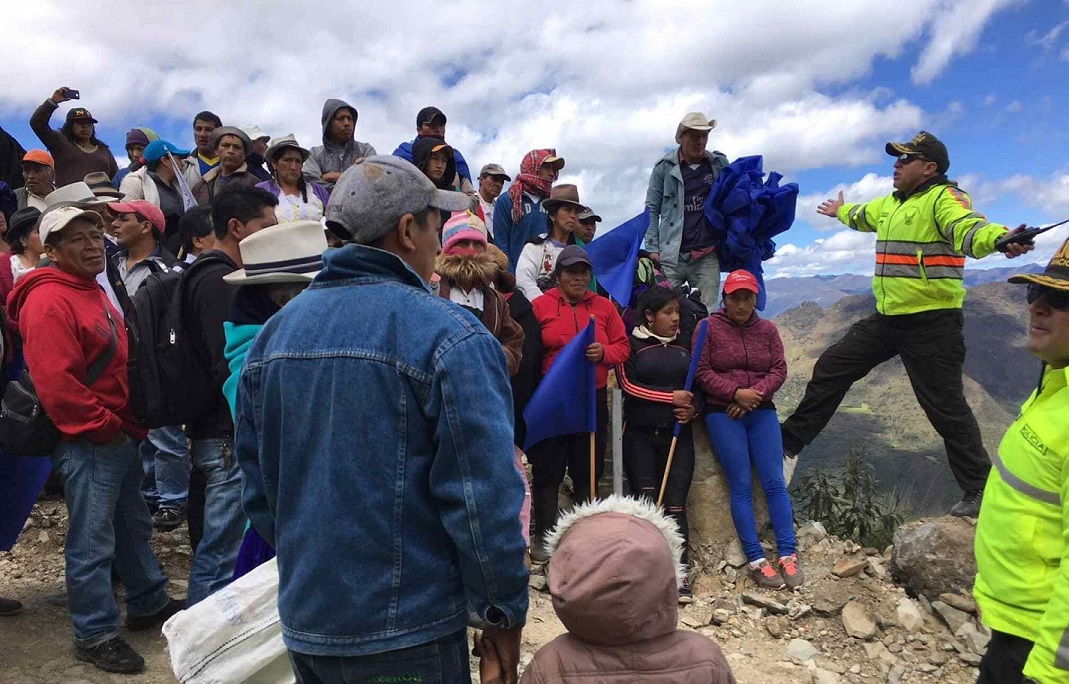
by Deep Green Resistance News Service | Jul 26, 2018 | Lobbying
Featured image: Molleturo communities visit the site of the Rio Blanco mine to make sure the activities are suspended as required by a court order.
by Manuela Picq / Intercontinental Cry
Last June, an Ecuadorean court ordered the suspension of all mining activities by a Chinese corporation in the highlands of Rio Blanco, in the Molleturo area of the Cajas Nature Reserve. It was a local court in Cuenca that gave the historic sentence: a court shut down an active mine for the first time in the history of Ecuador. Judge Paúl Serrano determined that the Chinese private corporation Junefield/Ecuagoldmining South America had failed to consult with the communities as required by Ecuador’s Constitution and by the UN Declaration on the Rights of Indigenous Peoples (UNDRIP).
Judge Serrano deemed the mining activity illegal and ordered the corporation to immediately suspend all its activities. Within two weeks, local communities accompanied police forces and local government officials in monitoring that the court order was respected.

Police and Molleturo communities discuss procedures to monitor the suspension of mining activities. Photo: Manuela Picq
The company appealed, and pressure was on the rise for the following hearing. The Chinese corporation privately offered $18 million to community leaders. Ecuador’s President, the Minister of Mines and the Minister of the Environment visited the province to pressure the local courts and indigenous communities to accept the mining activity. They defended “sustainable” mining as a form of development.
Affected communities consolidated their resistance, monitoring the access to the mine to impede mine workers to enter their territories, building support from neighboring communities, and informing the international community of the legal stakes.

Photo: Manuela Picq
On July 23, 2018, the court met again to either ratify or revert the decision to suspend mining activities in Rio Blanco. The court listened to all sides along with some expert testimonies; but there were discrepancies among the judges who postponed their verdict for another week.
Molleturo’s lasting vigilance for their waters
The Rio Blanco mine is located in the Molleturo-Mollepongo region, above ten thousand feet in the Andes. The mining license encompasses approximately six thousand hectares of paramos, lakes, and primary forests that nourish eight important rivers. This area replenishes the water system of the Cajas National Park, one of the largest and most complex water systems of Ecuador, which covers over a million hectares and holds immense water reserves.
The area is recognized as a natural biosphere reserve by UNESCO. These mountains have long been the home of Kañari-Kichwa indigenous communities. There are 12 archeological sites in the Molleturo area alone: the most famous one is the Paredones archeological site, located right by the mine.

Photo: Manuela Picq
The area is also a vital supply of water. These paramos provide water to 72 communities in Molleturo, freshwater to towns in the southern coast of Ecuador and to the city of Cuenca, the country’s third largest city which praises the quality of its drinking water.
The Rio Blanco mine is expected to be active for seven years, removing about 800 tons of rock per day and using cyanide to extract gold and silver. This entails an estimate of one thousand liters of water per hour that would be contaminated with deadly toxic waste, including arsenic, before being thrown back into rivers and soil.
Local indigenous communities were never consulted prior to the development of the project that would benefit from a recent Ecuadorean law incentivizing foreign investment. Nor did they give their consent to the licensing of their territories to the Junefield corporation. They reject the mine because it would contaminate their waters.

Photo: Manuela Picq
Women are at the forefront of the resistance that began almost two decades ago, when the mining license was first issued. Molleturo communities have been arguing in defense of water more or less actively over the last decade and a half but stepped it up when the mine started its activity in May 2018. Protests exploded, and a group burned out the miner’s living quarters.
Nobody was hurt in the explosion, but the police intervened, heavily armed, to militarize the area. The next day, protesters called in the president of Ecuador’s Confederation of Kichwa People Peoples for help, Yaku Perez Guartambel, but workers from the mine kidnapped him for eight hours, threatening to kill him. Tensions boiled to new heights.
Prior consultation as a fundamental indigenous human right
The Judge ordered the suspension on the mine–invoking constitutional and international indigenous rights to prior consultation.

Rosa, a delegate from the Andean Network of Indigenous Organizations (CAOI), discusses the territorial dimension of self-determination to community members gathered in the páramos of the Cajas mountain range. Photo: Manuela Picq
Since 1989, Art. 6 of the International Labor Organization Convention 169 safeguards indigenous rights to prior consultation on projects taking place on indigenous territories. Art. 18 of UNDRIP establishes indigenous rights to participate in decision making relating to their territories, and Art. 19 establishes that states must consult “in good faith” to obtain indigenous “prior, free, and informed consent: about legislative of administrative measures impacting their communities. In 2016, Art. 25 of the American Declaration on the Rights of Indigenous Peoples reiterated these principles in the context of the Organization of American States.
Prior consultation is not a simple law; it constitutes a fundamental human right of indigenous peoples because their existence is intimately tied to their territories. Their culture, lifeways, and community structures are woven into territorial autonomy.
An Amicus Curiae from a Chinese environmental lawyer
About half a dozen amicus curiaes were presented to Cuenca’s court supporting the communities right to prior consultation, from a range of organizations including the Environmental Defense Law Center, Ecuador’s Ecumenic Commission of Human Rights (CEDHU) and the Ecuadorian group Critical Geographies. Amicus were presented by scholars from Ecuadorean and American universities, including Universidad Internacional del Ecuador, Universidad de Cuenca, Universidad San Francisco de Quito, American University, and Coastal Carolina University.
Environmental lawyer Jingjing Zhang, from Beijing, submitted an amicus in which she provided an overview of relevant Chinese laws and regulations. She testified to the court on July 23, 2018, explaining that China ratified the UN Declaration on the Rights of Indigenous Peoples in 2007, thus supporting prior consultation and consent for any project on their territories. She reminded the words of the Chinese delegate at the 13th Session of the UN Permanent forum on Indigenous Issues (2014): “ the international community is duty bound to fully meet the legitimate requests of indigenous peoples, to promote and protect their basic human rights and freedoms, to safeguard the natural environment and resources on which their survival depends” and China “firmly supports the promotion and protection of the basic human rights and fundamental freedoms of all indigenous peoples around the world. ”

Jingjing testifies to the court in Cuenca, July 23 2018, with an interpreter. Photo: Manuela Picq
She explained to the court that China has regulations establishing that enterprises may not violate international treaties ratified by the Chinese government and that they are bound by the laws and environmental regulations of the host country. She stated that The Communist Party of China (CPC), State Council, and various government agencies have issued policy guidelines that encourage Chinese companies to focus on ecological environmental protection in their foreign investments. In her view, the Chinese government has deep concerns on the law-abiding and environmental performance of Chinese companies operating overseas.
Her amicus concluded that China’s Environmental Protection Law, Environmental Impact Assessment Law, and the Government Information Disclosure Regulation have strict provisions on the public participation rights of citizens. These regulations are based on the same principles and contain similar provisions to the Ecuadorian norms on the rights of indigenous peoples to prior consultation.
One step forward or two sets back?
The court sentence to suspend the mine marked a milestone of hope to Indigenous peoples and nature defenders. Yet the old tactics of legal warfare are still in use. Within a week of the court sentence, over 20 nature defenders were criminalized, eight of them charged with the crime of sabotage.
The private corporation Junefield/Ecuagoldmining South America did not have to do engage in public debate, Ecuador’s government is taking the lead. It was the Ministry of the Interior who accused indigenous peoples to defend the interests of the Chinese corporation. “The state proves that it is the best lawyer of mining companies,” says Yaku Perez Guartambel.
Will the criminalization of nature defenders continue? For now, judges are holding off a final verdict, and as the clock ticks political and economic pressures thicken. Molleturo leader Fausto Castro says that communities want their right to life back, and that they seek a peaceful solution to this mining conflict. It is indeed an achievement that serious confrontations were avoided, but this may not last forever. Yesterday, when the Judge staved off sentence as hundreds of nature defenders awaited outside the courtroom, many expressed their fears: “if the court reverts its sentence to benefit the State, it is a declaration of war.”
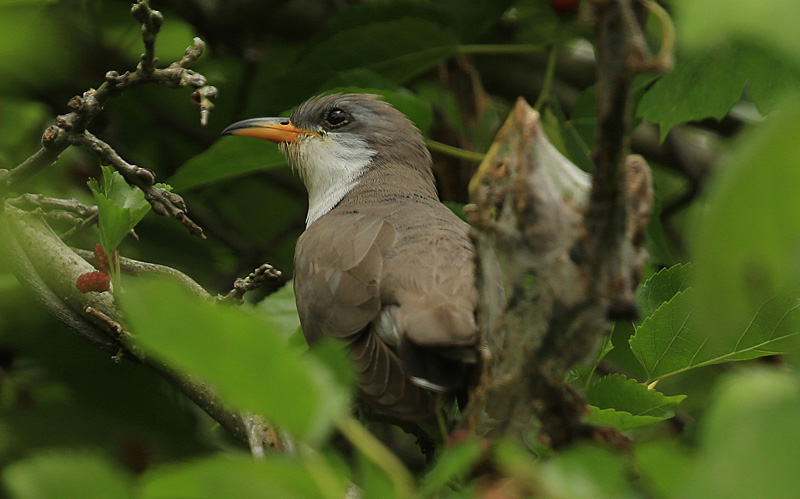
by Deep Green Resistance News Service | Jul 16, 2018 | Lobbying
Featured image by Seabamirum/Flickr.
by Center for Biological Diversity
LOS ANGELES— The Center for Biological Diversity notified the U.S. Fish and Wildlife Service today of its intent to sue the agency for failing to protect lifesaving critical habitat for the western yellow-billed cuckoo.
The songbird once ranged widely in the western United States but has declined to as few as 350 pairs concentrated in Arizona, New Mexico and California. The Center has worked for its protection for two decades, first submitting a scientific petition to list it under the Endangered Species Act in 1998.
After more than a decade of delay, the Service finally listed the western cuckoo as threatened in 2014. The agency also proposed the protection of more than half a million acres of the species’ critical habitat, but it has failed to finalize the designation.
“After many years of delay, it’s time for the Fish and Wildlife Service to protect the cottonwoods and willows and other streamside homes of this tenacious songbird,” said Brian Segee, a senior attorney at the Center. “Caring for our western rivers is essential to the cuckoo’s survival. And river restoration also has huge benefits for people and communities that need healthy waterways.”
The yellow-billed cuckoo depends on healthy streamside areas for breeding, nesting and feeding. Its disappearance from vast expanses of its former habitat is due largely to damming of rivers, water withdrawal and livestock grazing. Climate change threatens the cuckoo with increased drought, and pesticide use and collisions with communication towers and other tall structures further imperil the bird.
Critical habitat designation would help address these threats by requiring federal agencies to consult with the Service when their actions may result in damage or destruction of the bird’s habitat.
“The cuckoo has to get critical habitat designated immediately if we hope to continue to hear its call along our western rivers and streams,” said Segee.
In an announcement last month, the Service issued a positive 90-day finding that a petition to delist the western cuckoo submitted by livestock, mining and extremist property-rights interests “may be warranted,” the first step toward potential delisting of the species. The Center is separately opposing that proposal.
Background
The western yellow-billed cuckoo winters in South America and summers in the western United States and parts of Mexico and Canada. Its range has drastically shrunk with the species no longer occurring in most of the northern half of its range in the West.
Today the bird survives in scattered locations in small numbers, including along California’s Sacramento, Eel and Kern rivers; the Colorado, Gila, Verde and San Pedro rivers in Arizona; New Mexico’s Gila and Rio Grande rivers; and scattered locations in Colorado, Idaho, Nevada, Texas, Wyoming and Utah. Historically it was common from the shores of Lake Washington in Seattle to the mouth of the Colorado River.
The cuckoo is a visually striking bird with a long tail with flashy white markings. It breeds in streamside forests of cottonwood and willow and is one of the few species that can eat spiny caterpillars, such as tent caterpillars, which the adult birds and their chicks gorge on in the spring and summer.
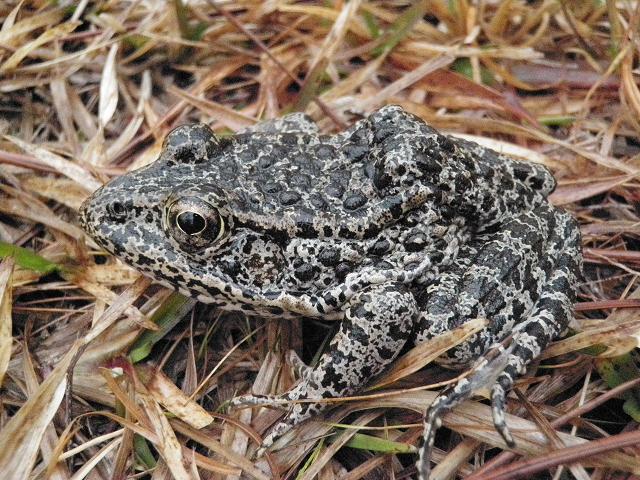
by Deep Green Resistance News Service | Jul 7, 2018 | Lobbying
Featured image: Dusky gopher frog courtesy USFWS
by Center for Biological Diversity
NEW ORLEANS— From economists and scientists to religious leaders and business owners, dozens of groups this week submitted “friend of the court” briefs asking the U.S. Supreme Court to maintain protections for 1,600 acres of “critical habitat” designated in Louisiana for endangered dusky gopher frogs.
“It’s inspiring to see so many people eloquently urge our nation’s highest court to protect endangered wildlife,” said Collette Adkins, a Center attorney fighting in the Supreme Court for the frog’s protections. “While these folks represent a wide range of interests, they’re united in supporting these little frogs, their habitat protections and the Endangered Species Act. Like most Americans, these scientists, businesspeople and faith leaders recognize that imperiled animals need a place to live.”
The U.S. Supreme Court in January granted a “petition for certiorari,” filed by the timber company Weyerhaeuser, to reconsider a June 2016 decision from a three-judge panel of the 5th Circuit Court of Appeals that upheld a 2012 rule establishing the frog’s protections.
That rule protects 6,477 acres of critical habitat in Mississippi and Louisiana, including 1,600 privately owned acres of unoccupied frog habitat in St. Tammany Parish, Louisiana. The panel held that the U.S. Fish and Wildlife Service reasonably concluded that the St. Tammany Parish land is essential for recovery of the frogs, which are now confined to just three sites in southern Mississippi — with only one site regularly showing frog reproduction.
The “friend of the court” briefs, also known as “amicus briefs,” filed this week ask the Supreme Court to affirm the panel decision. Volunteer lawyers and law students wrote the briefs, in a coast-to-coast effort to represent scientists, legal experts and others with economic, scientific, moral and aesthetic interests affected by this case:
- Landowners who value the presence of endangered species on their property and welcome efforts to preserve their habitats;
- Faith-based groups recognizing a shared commitment, rooted in religious teachings and principles, to care for the earth and its species;
- Scientists with expertise in conservation biology, including Stuart Pimm and E.O. Wilson;
- Frog experts who study amphibian ecology and have expertise in conservation of gopher frogs;
- Leading nonprofit conservation organizations with longstanding interests in protecting wildlife;
- Environmental law professors with expertise in the Endangered Species Act;
- Economists and law professors with expertise in economic theory, cost-benefit analysis, the valuation of environmental goods and environmental law and regulation;
- Former leaders of the Department of the Interior, ranging from the Nixon administration through the Obama administration, who administered and enforced the Endangered Species Act; and
- Small-business owners including ranchers, ecotourism entrepreneurs and artists, who make an economic case for biodiversity and stewardship.
The Center for Biological Diversity organized the amicus effort and, along with the Gulf Restoration Network, intervened in the case. Participating as parties in the litigation before the Supreme Court, the Center and GRN last week filed their brief in support of the frog’s habitat protections.
Background
The dusky gopher frog (Rana sevosa) is a warty, dark-colored frog with ridges on the sides of its back. When picked up, these frogs cover their eyes with their forefeet, possibly to protect their faces until predators taste their bitter skin secretions and release them. Gopher frogs spend most of their lives underground in burrows created by gopher tortoises — hence their name.
Once prevalent in Louisiana, Mississippi and Alabama, dusky gopher frogs are nearly extinct. More than 98 percent of longleaf pine forests — upon which the frog and many other rare animals depend — have been destroyed. Fire suppression, drought, pesticides, urban sprawl, highway construction and the decline of gopher tortoises have made this frog so rare it now lives in only a few small Mississippi ponds, with only one pond showing consistent frog reproduction.
In response to a Center lawsuit, the Fish and Wildlife Service listed the gopher frog as a federally endangered species in 2001. The lawsuit and advocacy by the Center also prompted the 2012 critical habitat designation at issue in the Supreme Court case. Additionally, in response to legal advocacy by the Center and Gulf Restoration Network, the agency released a final recovery plan for the frogs in 2015.
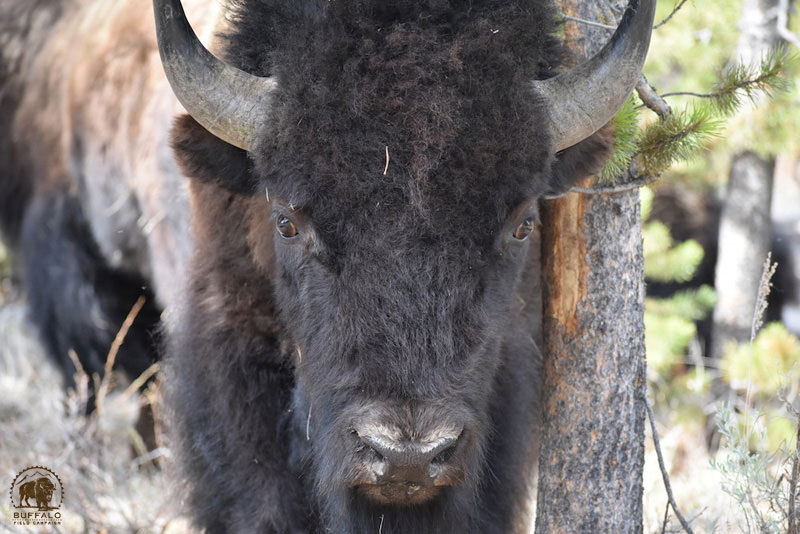
by Deep Green Resistance News Service | Jun 30, 2018 | Lobbying
Featured image by Stephany Seay, Buffalo Field Campaign
by Buffalo Field Campaign
On Monday, (June 25) our attorneys at Friends of Animals informed BFC that the US Fish & Wildlife Service has withdrawn their appeal, and Buffalo Field Campaign and Western Watersheds Project’s lawsuit victory will stand.
On January 31, 2018, U.S. District Court Judge Christopher R. Cooper ruled the Service violated the Endangered Species Act in finding that the imperiled bison did not warrant protection under the Act. With their appeal officially withdrawn, the Service now has to issue a new 90-day finding consistent with Judge Cooper’s opinion.
In his ruling, Judge Cooper said the Service couldn’t pick and choose science and ignore evidence that bison may be threatened. At the 90-day finding stage, Judge Cooper found the Service must credit evidence presented in our petition that bison may warrant listing as an endangered species.
The clock is now ticking for the Service to act and issue a new 90-day finding on our petition to list bison as an endangered species.
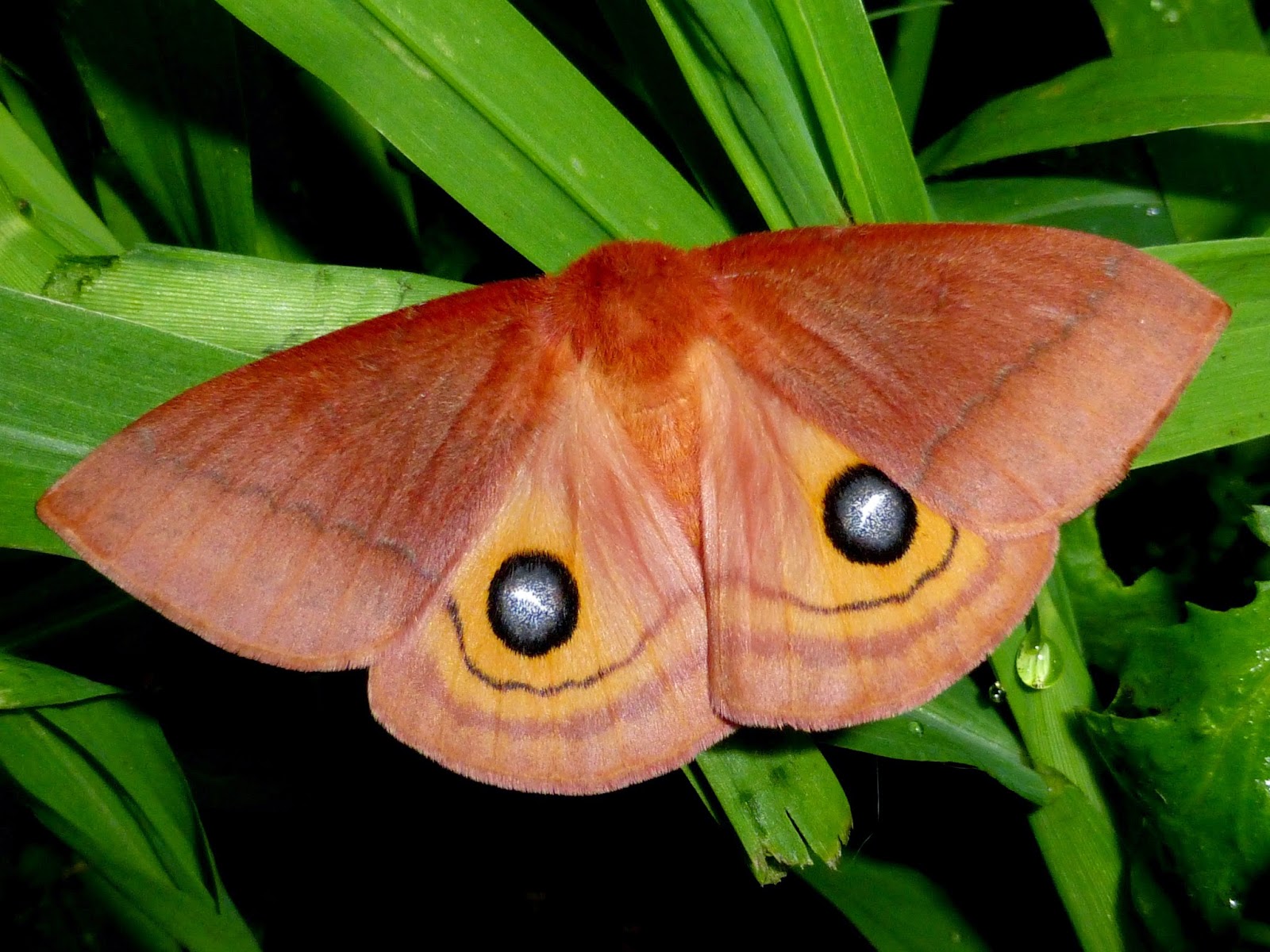
by Deep Green Resistance News Service | May 5, 2018 | Lobbying
by Center for Biological Diversity
WASHINGTON— Defenders of Wildlife, along with the Center for Biological Diversity and Patagonia Area Resource Alliance, today filed a notice of intent to sue the U.S. Fish and Wildlife Service to protect the Patagonia eyed silkmoth under the Endangered Species Act.
The rare Patagonia eyed silkmoth is clinging to survival in only three isolated locations in Arizona and Mexico. The groups previously petitioned the Fish and Wildlife Service to list the moth under the Endangered Species Act and designate critical habitat for the species.
“The Patagonia eyed silkmoth is hanging by a thread. With the only U.S. population existing in an Arizona cemetery, where its only remaining food source could be wiped out by cattle, this species clearly needs federal protection to save it from extinction,” said Lindsay Dofelmier, legal fellow at Defenders of Wildlife. “The Fish and Wildlife Service’s decision to dismiss evidence supporting listing the Patagonia eyed silkmoth was arbitrary. By failing to provide adequate explanation for the decision and not allowing for a 12-month status review, the Fish and Wildlife Service put the species at risk. Listing the silkmoth and designating critical habitat provides the best chance for recovery.”
The Patagonia eyed silkmoth exists in a single U.S. location, in an Arizona cemetery less than half an acre in size. In Sonora, Mexico, it lives on two sky islands, higher elevation areas that are ecologically different from the lowlands surrounding them.
“The Patagonia eyed silkmoth needs endangered species protection now, so we can start the work of recovering this beautiful animal,” said Brian Segee, a senior attorney at the Center for Biological Diversity. “The Endangered Species Act has saved more than 99 percent of plants and animals with its protection from extinction, and it can do the same for this rare moth.”
Cattle grazing was the primary historic cause of habitat loss for the moth and continues to play a major role in the precarious situation of the species. Mining and climate change also threaten to destroy the last vestiges of potential silkmoth habitat on both sides of the border. A catastrophic fire at critical times of the year, when the adults, eggs or larvae are out, could completely erase the moth from any of these remaining localities. Listing the silkmoth and designating critical habitat for the species offers its best chance of survival and recovery.












